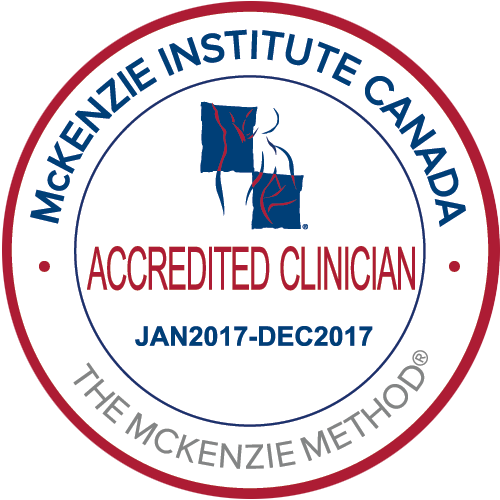The McKenzie method of MDT (Mechanical Diagnosis and Therapy) is a well-researched, exercise based approach of assessment, diagnosis and treatment intended for all musculoskeletal problems, including pain in the back, neck and extremities.
If you suffer from shoulder pain, knee pain, hip pain, sciatica, sacroiliac joint pain, arthritis, degenerative disc disease, muscle spasms and intermittent numbness in hands or feet, then a MDT assessment may be right for you!
The McKenzie Method allows patients to learn the principles of their rehabilitation process, and empowers them to be in control of their own symptoms management, which can reduce dependency on medical intervention.
It gives you the power to control your pain, stiffness and improves your ability to do your work or daily activities. You will not have to spend months in therapy. You will not need to buy or use expensive equipment.

How does it work?
MDT is comprised of four primary steps: assessment, classification, treatment and prevention.
Most musculoskeletal pain is “mechanical” in origin, which means it is not due to a serious pathology, like cancer or infection. The result of abnormal or unusual positions, movements or activities can cause pain and sensitivity on tissues. If a mechanical force caused the problem then it is logical that a mechanical force may be part of the solution.
In the simplest and most common instance, this may mean that moving in one direction may provoke and worsen the pain, and moving in the opposite direction may eliminate the pain and restore function. This is known as Directional Preference. Other patients may have pain just at the end of movement or with certain functional movements like throwing or stair climbing. The McKenzie assessment explores these different positions and movements, how the patient performs them, and the response to these movements.
Interpreting this information, the clinician determines which of the movements and posture becomes the treatment as well as the necessary exercise dosage.
A series of individualized exercises are prescribed based on the assessment findings and the patient does them at home. Patients who respond favorably with MDT can successfully treat themselves and reduce the number of visits to the clinic when provided with the necessary knowledge and tools. This puts him or her in control of their treatment.
The exercises which helped resolve the problem can be adapted to help prevent its return. The patient learns what can cause the problem so as to avoid a reoccurrence and how to quickly manage themselves if symptoms do appear.
Who does McKenzie MDT?
When looking for a qualified McKenzie trained clinician, you should be aware that there are clinicians in the field with varying levels of training and proficiency through The McKenzie Institute. There are clinicians that may have only taken a course or two in order to get a general idea of the approach, while there are other clinicians that go on to complete the entire training program.
At our clinic are proud to have Lina Gutiérrez and Luis Ramírez who are the first Accredited McKenzie therapists in Ottawa. Check this website for more details.
